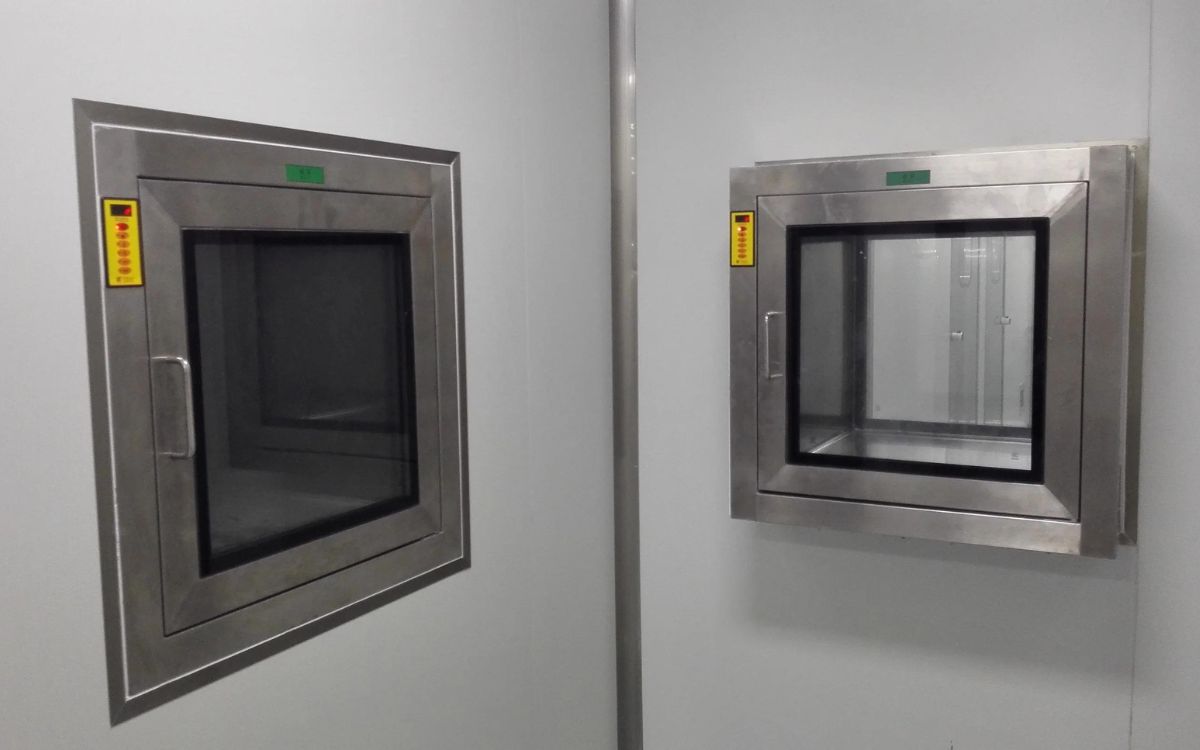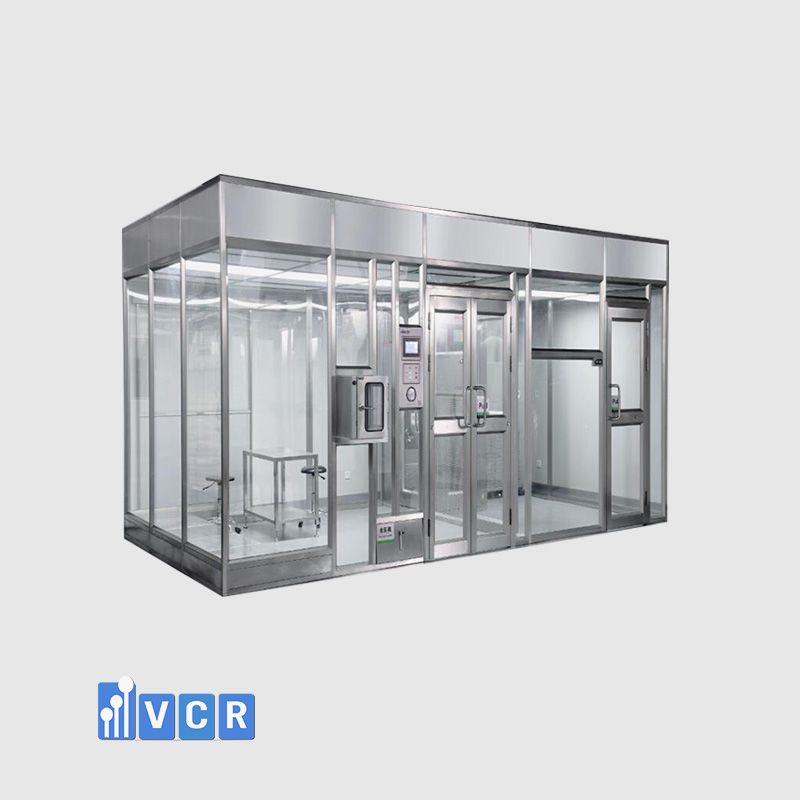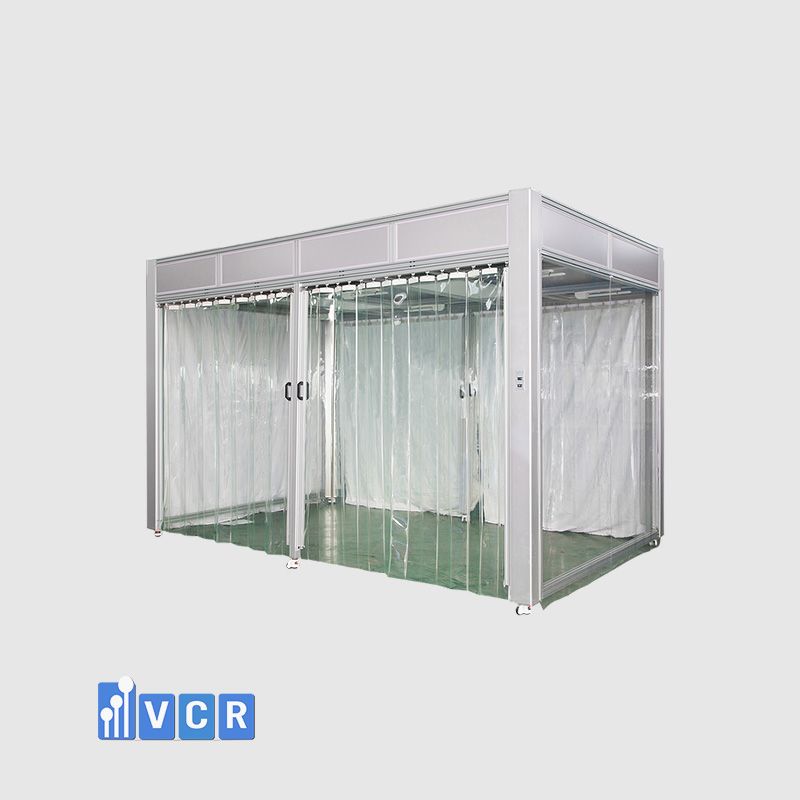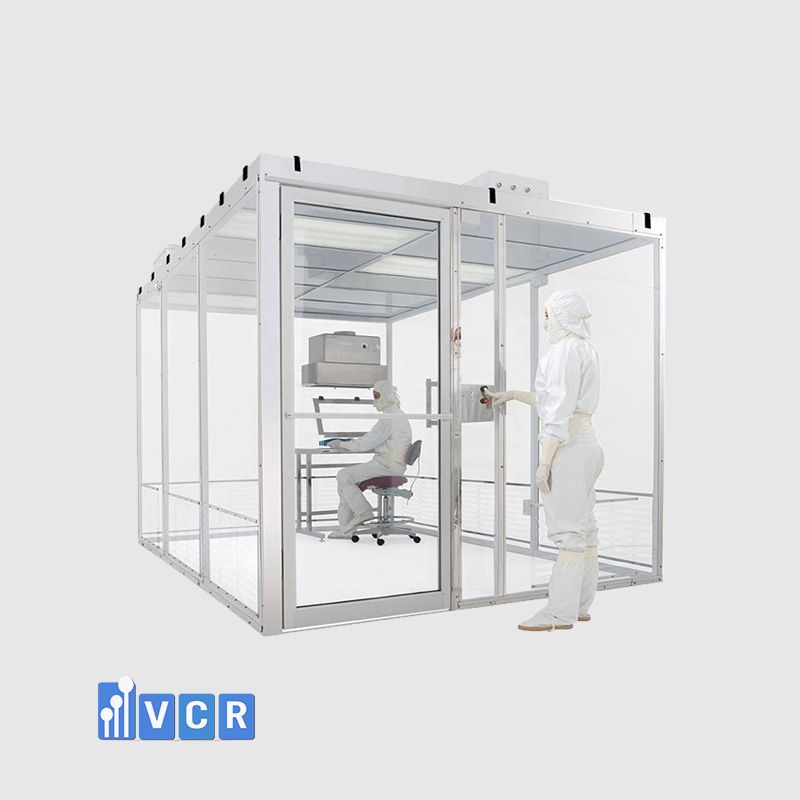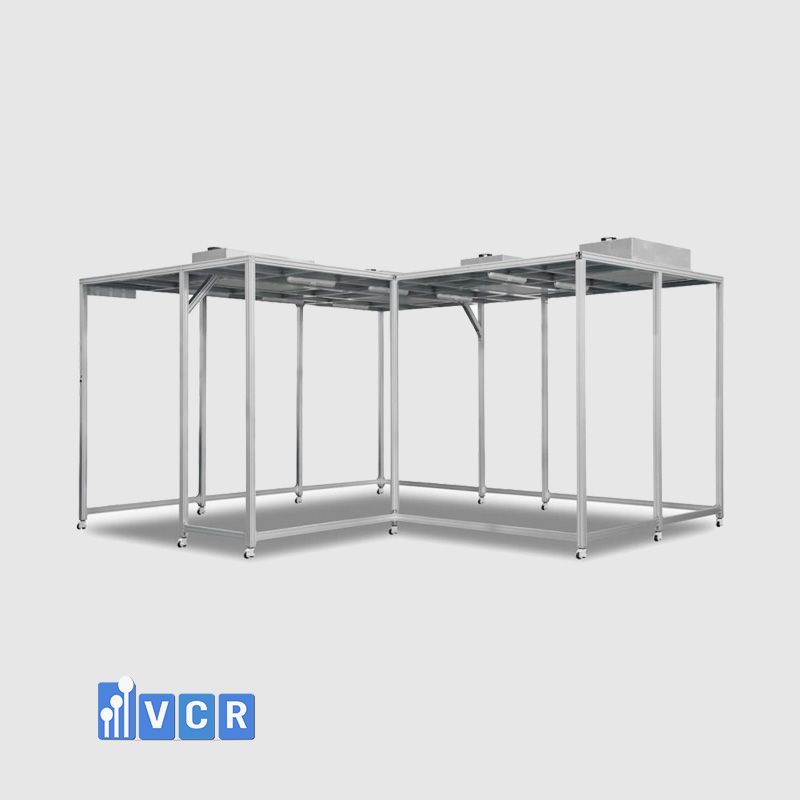- 1. When is a Pass Box Needed in an Electronics Manufacturing Facility?
- 2. Key Criteria for Selecting a Pass Box for Electronics Cleanrooms
- 3. Common Types of Pass Boxes Based on Application Needs
- 4. Common Mistakes When Selecting a Pass Box for Electronics Cleanrooms
- 5. Recommended Pass Box Types by Cleanroom Area
- 6. Quick Answers About Pass Boxes in Electronics Cleanrooms
- 7. Not Sure Which Pass Box to Choose for Your Electronics Cleanroom?
1. When is a Pass Box Needed in an Electronics Manufacturing Facility?
In electronics manufacturing, controlling ultra-fine particles, electrostatic discharge (ESD), and microbial contamination is essential to ensure product quality-especially for sensitive components like PCBs, ICs, and sensor modules. That’s why the Pass Box is considered an essential device in any ISO 14644-1 certified cleanroom design.
Here are three common scenarios where a Pass Box is necessary:
Transferring materials between clean zones of different ISO classes
Electronics factories are often divided into multiple zones with varying cleanliness levels (e.g., ISO Class 7 for support areas and ISO Class 5 for SMT rooms). Using a Pass Box ensures:
- Cross-contamination between zones is minimized
- Foot traffic through main doors is reduced
- Transfer speed of materials is increased without compromising cleanliness
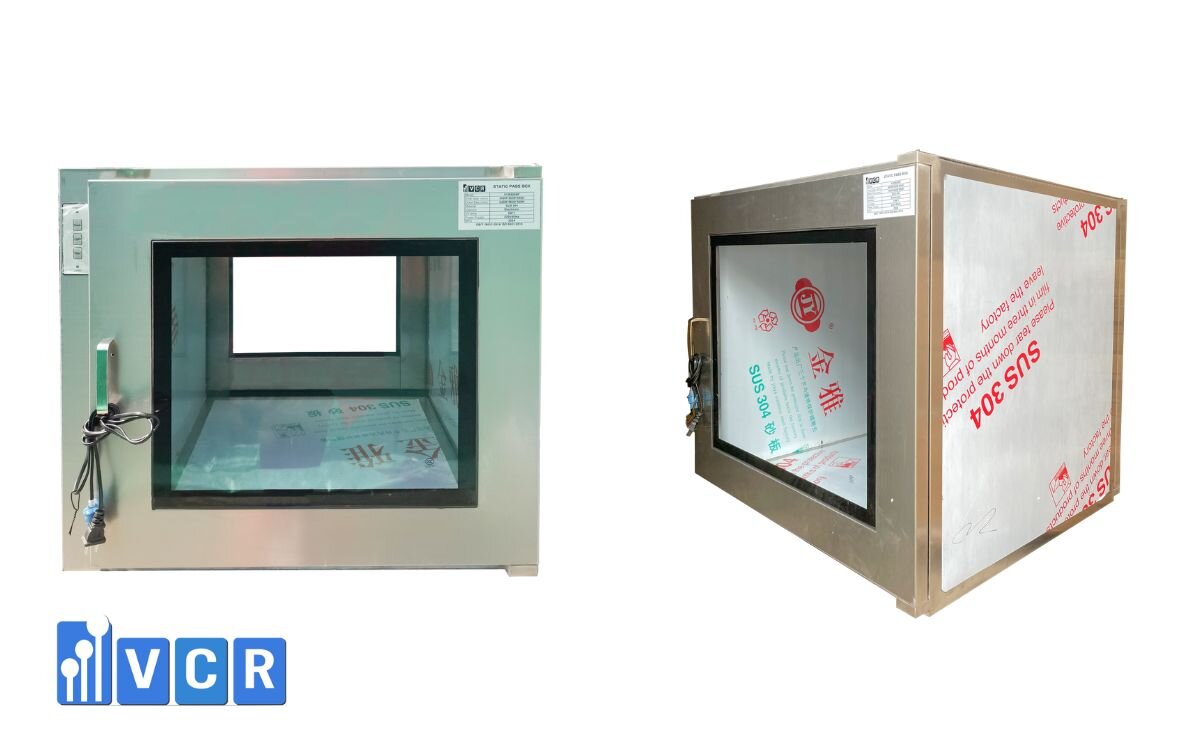
Reducing direct human interaction
Each human entry into a cleanroom introduces risks of contamination from clothes, hair, skin, or static charge. A Pass Box helps:
- Reduce the number of main door openings, maintaining pressure differentials
- Avoid physical contact between personnel in different zones
- Enhance safety for ESD-sensitive components
Maintaining pressure differentials and unidirectional airflow
Some production zones require strict pressure controls to prevent dirty air from entering clean areas. Pass Boxes with interlock systems or built-in air filtration can:
- Prevent air leakage during material transfer
- Maintain unidirectional airflow as per design
- Reduce the workload on the central HVAC system
Pass Boxes are not just intermediate devices-they are critical components in maintaining cleanroom stability in electronics production. Understanding when and where to install them is the first step to ensuring compliance and optimizing operational costs.
See more: ISO 5 quality control room design
2. Key Criteria for Selecting a Pass Box for Electronics Cleanrooms
Not all Pass Boxes are suitable for electronics applications. Each industry has its own requirements, and in the case of semiconductor and PCB manufacturing, ESD control, airtight sealing, and ISO compatibility are non-negotiable.
Here are the five most important technical criteria:
1. ESD Safety (Electrostatic Discharge Control)
Static electricity is the number one threat in electronics manufacturing-even a small discharge can destroy or degrade sensitive components. Therefore, in areas such as SMT or inspection zones, Pass Boxes should feature:
- ESD-coated surfaces or anti-static powder-coated steel with surface resistivity between 10⁶-10⁹ Ω
- Non-conductive or insulated hinges, handles, and seals
- Grounding systems to dissipate accumulated charges
Recommendation: Choose Pass Boxes with ESD test certifications such as ANSI/ESD S20.20.
2. Door Type and Interlocking Mechanism
Interlock systems are critical in environments where airflow control and operational safety are priorities:
- Use electronically interlocked doors that prevent simultaneous opening
- Include status indicators (e.g., red/green lights) for operation guidance
- Opt for double-layer tempered glass doors that are dust-resistant and allow visibility
3. Air Filtration Level
If the area requires ISO Class 5-7 cleanliness, air filtration within the Pass Box is necessary:
- HEPA filters (≥99.97% efficiency for ≥0.3-micron particles)
- ULPA filters for ISO Class 5 applications (≥99.999% efficiency)
- Optional UV lamps for surface sterilization
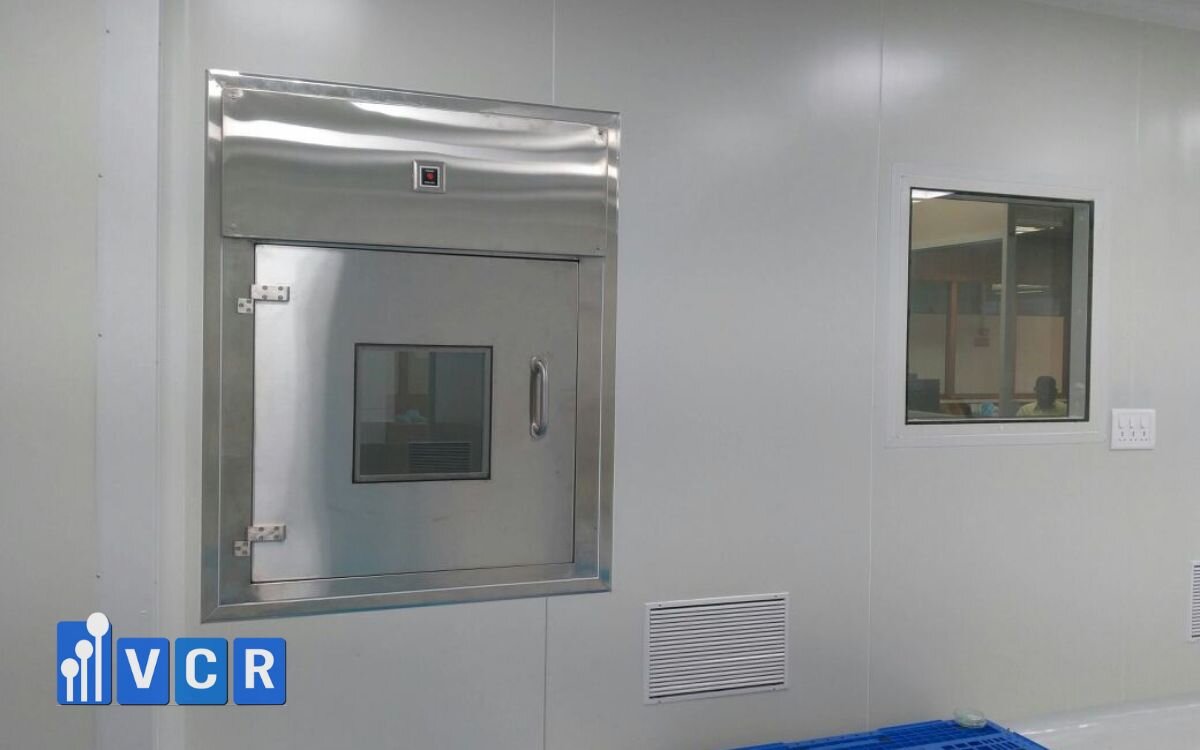
4. Appropriate Chamber Dimensions
Selecting a Pass Box that’s too small can hinder operations, while oversized units may waste space and budget. Consider:
- Average size of materials being transferred (e.g., component boxes, inspection tools)
- Frequency of use (single-door vs. double-door, single vs. twin boxes)
- Site conditions (tabletop, wall-mounted, or floor-standing)
Tip: For SMT areas, a chamber size of around 600 x 600 x 600 mm is optimal.
5. Construction Materials Suitable for Cleanrooms
Material durability, ease of cleaning, and corrosion resistance are essential:
- SUS 304 or SUS 316L stainless steel: rust-proof, smooth surface, chemical-resistant
- Anti-static coated steel: cost-effective while maintaining ESD compliance
- Avoid aluminum, plastic, or uncoated steel due to dust generation, lower durability, and poor hygiene
Choosing the right Pass Box ensures better lifecycle cost management, higher product integrity, and long-term ISO/ESD compliance.
See more: Common mistakes when inspecting electronic clean rooms
3. Common Types of Pass Boxes Based on Application Needs
Different zones within an electronics factory serve distinct functions, ranging from static control and air cleanliness to operational convenience. Selecting the wrong Pass Box can not only reduce efficiency but also jeopardize sensitive components.
Below are four popular Pass Box types, categorized by technical features and real-world usage:
|
Pass Box Type |
Key Features |
Typical Applications |
|
Manual Pass Box |
Low cost, easy to install, simple maintenance |
Warehousing areas, rough material transfer |
|
Semi-Automatic Pass Box |
Electronic interlock, status indicators, user-friendly |
SMT lines, quality control zones, inspection rooms |
|
Pass Box with HEPA/UV |
≥99.97% particle filtration, UV sterilization |
Environmental test chambers, contamination-sensitive labs |
|
ESD-Safe Pass Box |
ESD coating, full electrical insulation, grounded |
Final packaging zones, PCB/IC transfer areas |
Manual Pass Box is suitable for auxiliary zones where cleanliness requirements are moderate.
Semi-Automatic Pass Box balances usability and cost for frequently accessed areas.
HEPA/UV Pass Boxes enhance contamination control in critical test environments.
ESD-Safe Pass Boxes are mandatory for static-sensitive zones, offering maximum component protection.
Selecting the correct Pass Box based on specific zone needs is essential for optimizing cleanroom efficiency and maintaining product quality in electronics manufacturing.
4. Common Mistakes When Selecting a Pass Box for Electronics Cleanrooms
During the implementation of electronics cleanroom systems, many companies face issues such as purchasing the wrong model, incorrect installation, or needing to replace the Pass Box shortly after commissioning. The problem often lies not in the equipment itself but in the failure to properly assess actual operational requirements.
Here are three common mistakes engineers and investors should avoid:
1. Choosing the wrong door type - Leads to air leakage and loss of environmental control
Many assume that all Pass Box doors are the same, which results in:
- Using standard hinged doors in zones requiring high airtightness, leading to pressure instability
- Omitting interlock systems, allowing both doors to open simultaneously-violating unidirectional flow principles
- Selecting weak glass doors that can shatter during material transfer
Recommendation: Always use double-layer tempered glass doors, air-tight gaskets, and electronic interlocks, especially in SMT, testing, or packaging areas.
2. Failing to check surface conductivity - Causes component damage
A critical yet often overlooked issue in electronics:
- Using standard steel or plastic Pass Boxes without ESD certification can lead to static buildup
- Lack of grounding terminals or proper connections prevents safe charge dissipation
Consequence: PCBs, ICs, or sensors may be damaged without a clear cause during quality testing.
Recommendation: Check material surface resistance according to ANSI/ESD S20.20, and always request ESD compliance documentation when ordering.
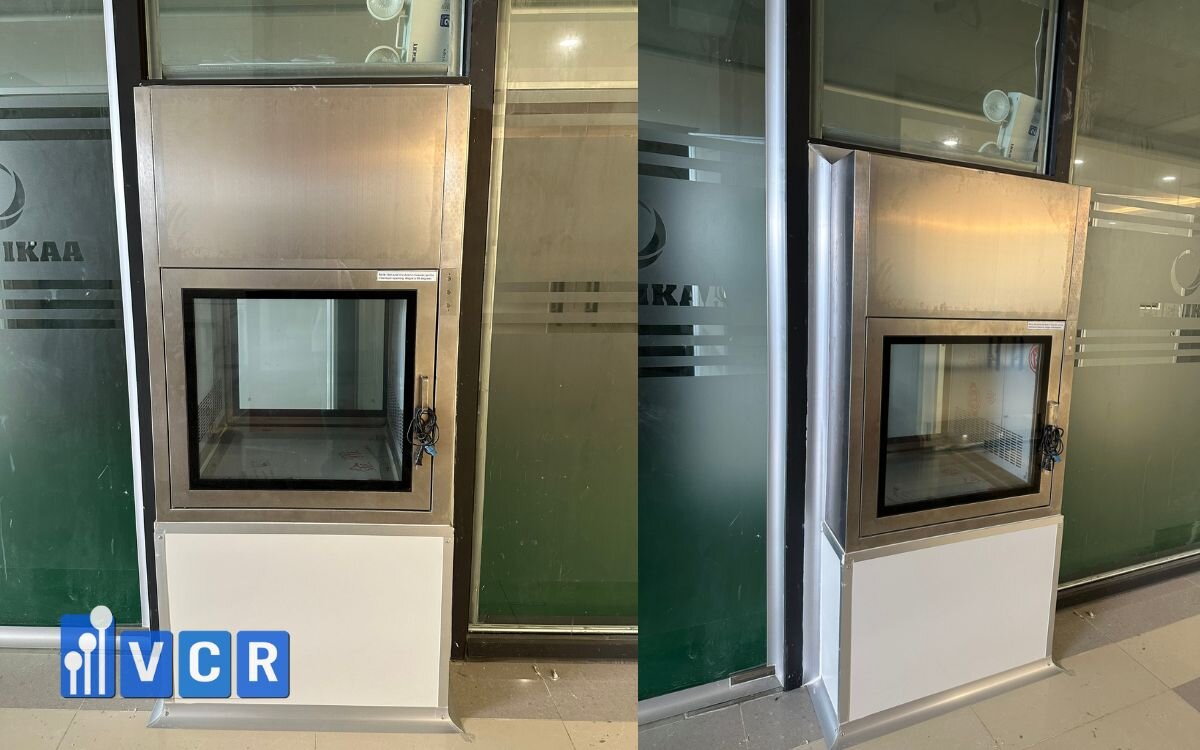
3. Incompatible sizing - Leads to additional replacement costs
Another common issue:
- Selecting a Pass Box based on default dimensions without considering the average size of transferred items
- Failing to measure the actual installation space, leading to wall modifications or layout changes
Result: The Pass Box becomes ineffective or must be replaced post-installation-wasting both time and budget.
Recommendation: Survey material dimensions and handling volumes in advance. Choose tabletop, wall-mounted, or double units depending on layout needs.
See more: ESD Powder Coating or Anodizing – Effective Anti-Static Solution for Electronic Clean Rooms
5. Recommended Pass Box Types by Cleanroom Area
In electronics cleanroom design, there is no one-size-fits-all Pass Box. Each functional area requires specific controls-whether for ESD, air cleanliness, sterilization, or operational efficiency. Below are practical recommendations to help you choose the right equipment from the start:
SMT Assembly Area
- Requirements: Strict ESD control, easy handling, quick internal visibility
- Recommended:
- ESD-safe Pass Box
- Dual-layer tempered glass doors
- Electronic interlock with status indicators
- Why: PCBs, ICs, and modules are highly sensitive to static. Improper door operation can compromise entire batches.
Raw Material Storage (Warehouse)
- Requirements: High-volume material exchange, minimal ESD requirements
- Recommended:
- Manual Pass Box with handle or hinged doors
- Large size (≥700 x 700 mm) to accommodate boxes or trays
- Why: This area handles bulk goods, so cost-efficiency and flexibility matter-while still preventing cross-zone contamination.
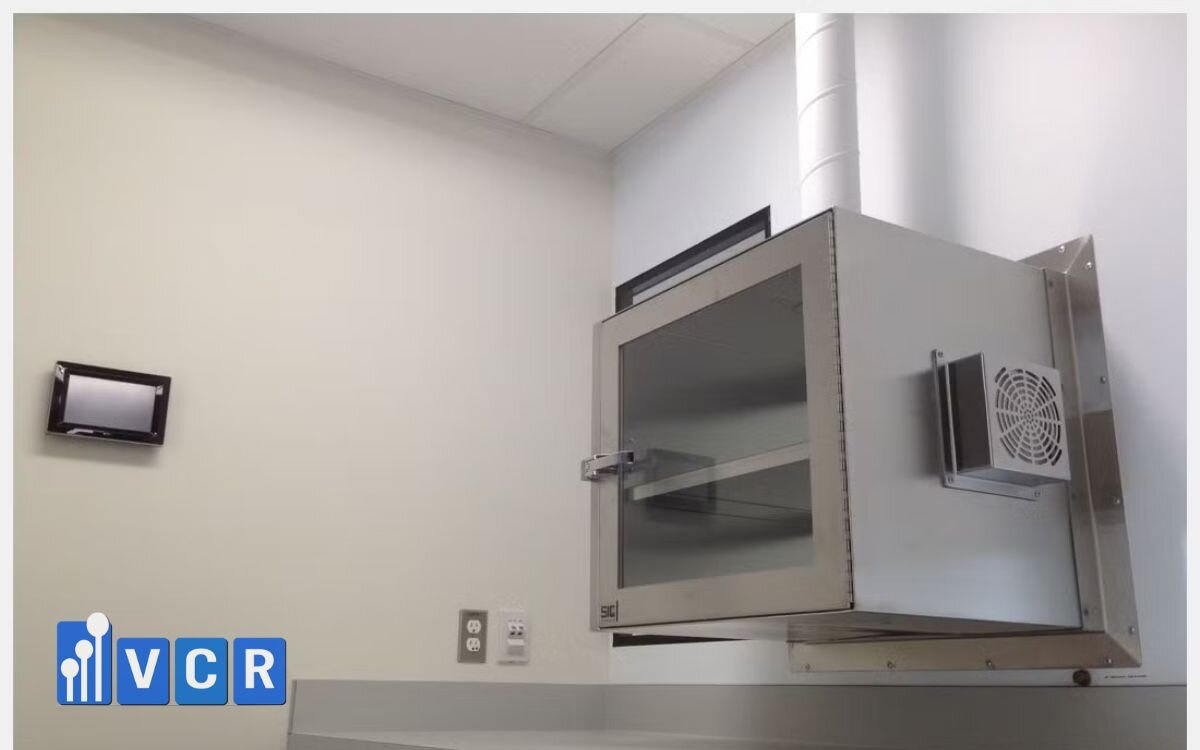
Quality Control (QC) Zone
- Requirements: Transport of sample components and precision instruments
- Recommended:
- Semi-automatic Pass Box with electronic locking
- Cushioning seals or air buffer systems
- Why: Measurement tools like oscilloscopes and test jigs are fragile. Controlled handling prevents accidental damage.
Environmental Testing Area
- Requirements: Ultra-clean environment, particle filtration, microbial sterilization
- Recommended:
- HEPA filter (≥99.97%)
- Built-in UV lamps for surface sterilization
- Why: Each test sample must remain uncontaminated. The Pass Box supports local filtration and mild sterilization before room entry.
6. Quick Answers About Pass Boxes in Electronics Cleanrooms
Do I need a Pass Box with a HEPA filter for electronics production?
It’s not mandatory for all areas, but highly recommended in high-cleanliness zones such as testing, quality inspection, or final product handling.
HEPA filters remove ≥99.97% of particles ≥0.3 microns, protecting sensitive components from fine dust that could cause failure.
Can I use a stainless steel Pass Box in ESD-sensitive areas?
Yes, but only if the stainless steel is treated for ESD, such as with anti-static coatings that meet surface resistance standards (10⁶-10⁹ Ω).
The best choice is a dedicated ESD-safe Pass Box with grounding, insulated parts, and ANSI/ESD S20.20 compliance certification.
Should I choose a manual or electronic Pass Box for electronics factories?
- Manual Pass Boxes are suitable for low-risk areas like warehouses or secondary packaging.
- Electronic Pass Boxes (semi or fully automated) are ideal for SMT lines, QC, or test zones-where interlocking, status indicators, and system integration are critical for safety and cleanroom compliance.
7. Not Sure Which Pass Box to Choose for Your Electronics Cleanroom?
Choosing the wrong Pass Box could cost you product quality, rework expenses, or even non-compliance during ESD or ISO audits.
Don’t let a small oversight lead to big problems. Let VCR’s cleanroom engineers support you-through site surveys, model selection for each zone, professional installation, and GMP/ISO/ESD-compliant operation guidance.
Contact us today for expert consultation:
Hotline: 090.123.9008
Email: [email protected]
Website: https://phongsachdientu.com/
Diep VCR
Vietnam Cleanroom (VCR) là một doanh nghiệp hàng đầu tại Việt Nam chuyên cung cấp thiết bị và giải pháp phòng sạch. Với hơn 10 năm kinh nghiệm phục vụ các dự án phòng sạch đạt tiêu chuẩn GMP, VCR tự hào mang đến các thiết bị kỹ thuật cao như: đồng hồ chênh áp, khóa liên động, đèn phòng sạch, Pass Box, FFU (Fan Filter Unit), buồng cân, HEPA Box, Air Shower, cửa thép phòng sạch, tủ cách ly (ISOLATOR), và nhiều loại phụ kiện chuyên dụng khác
Không chỉ là nhà cung cấp thiết bị, VCR còn là đơn vị phân phối độc quyền các sản phẩm từ các thương hiệu quốc tế như LENGE và BLOCK Technical, đồng thời cung cấp các giải pháp phòng sạch toàn diện cho các lĩnh vực như dược phẩm, điện tử, y tế, thực phẩm và mỹ phẩm. VCR có đội ngũ chuyên gia giàu kinh nghiệm, kiến thức chuyên sâu về phòng sạch, hỗ trợ tư vấn về tiêu chuẩn, thiết kế, thi công và vận hành phòng sạch theo chuẩn ISO, GMP, HACCP, ISO 14644
VCR hướng đến trở thành thương hiệu quốc dân trong ngành phòng sạch, với mạng lưới cung ứng rộng khắp, VCR có các văn phòng tại Hà Nội, TP. HCM, đáp ứng mọi yêu cầu từ xây dựng đến nâng cấp môi trường sản xuất đạt chuẩn
Email: [email protected]
Điện thoại: (+84) 901239008
Địa chỉ:
VP Hà Nội: 9/675 Lạc Long Quân, P. Xuân La, Q. Tây Hồ, TP. Hà Nội
VP Hồ Chí Minh: 15/42 Phan Huy Ích, P.15, Q. Tân Bình, TP.HCM
Hãy liên hệ với VCR để tìm hiểu thêm về lĩnh vực phòng sạch hiệu quả nhất nhé!



